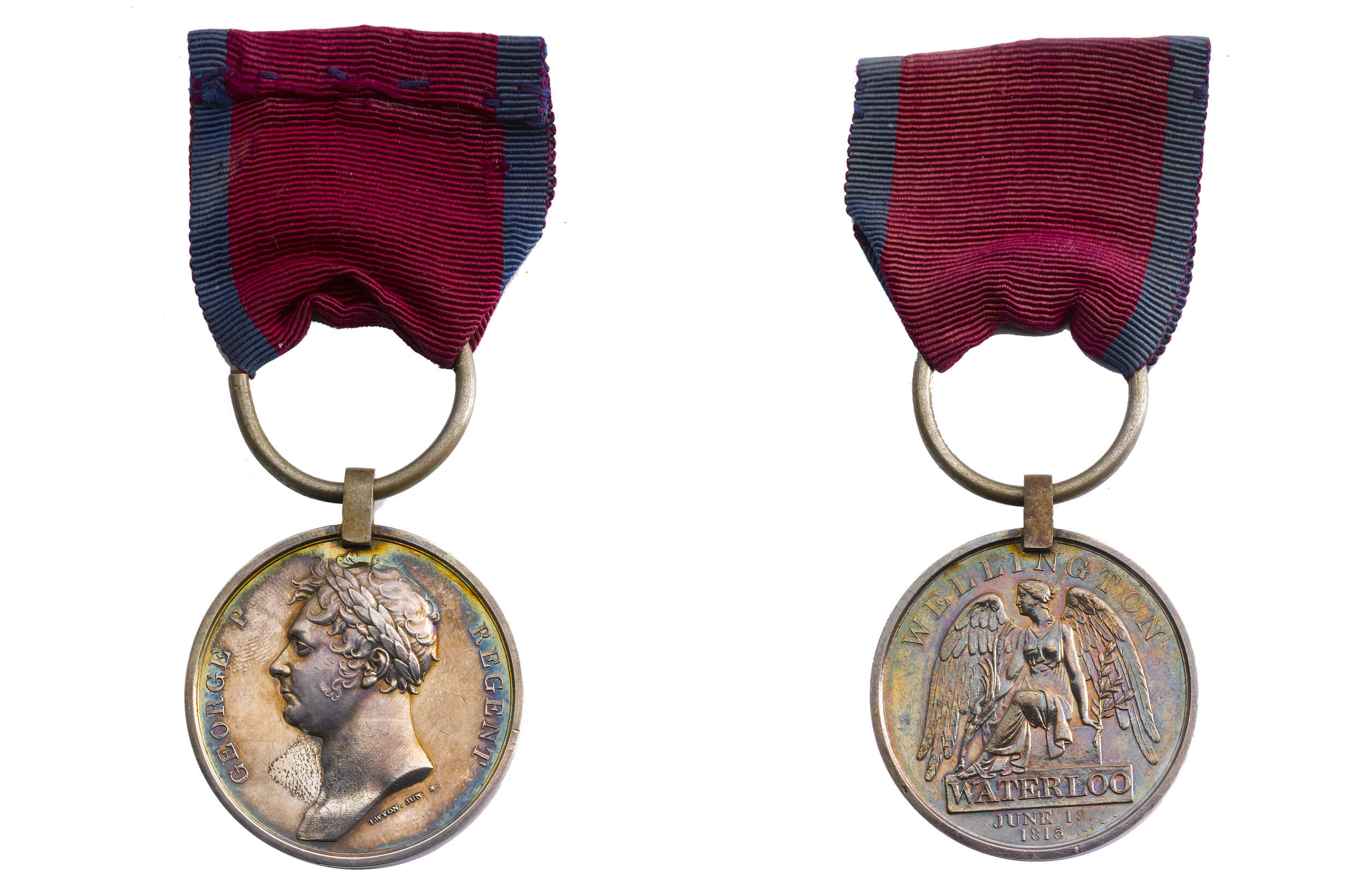Waterloo Medal
By the early nineteenth century, French Emperor Napoleon Bonaparte had expanded his empire into much of Europe, in a series of conflicts that culminated in the Battle of Waterloo in June 1815. British and Prussian forces, leading armies of the Seventh Coalition, defeated Napoleon’s forces and brought peace to Europe. To celebrate the victory, it was decided that for the first time all troops, no matter their rank, would be awarded with a campaign medal. William Wellesley Pole, the Master of the Mint and elder brother of the Duke of Wellington, supervised the striking of nearly 40,000 medals. The names and rank of all the men who took part in the Battle were recorded in the Waterloo Medal Roll, a beautiful leather-bound book, to permit the engraving of each medal’s edge with the name of its recipient. The Royal Mint Museum holds one of the few, and most complete, copies of the Medal Roll, as the organisation responsible for both the striking and engraving of medals.

The Medal Roll begins with letters written by Pole to Benjamin West, the President of the Royal Academy. Pole wrote on 11 July 1815 that he wanted the design of the medal to demonstrate ‘the high state of perfection which the Arts have now attained in Great Britain’ during the Prince’s regency and to ‘show the World that this country is as superior in her taste as she has lately proved herself to be in the skill and in valour of her Arms.’ The obverse of the medal featured a portrait of the Prince Regent, formed from a drawing by Sir Thomas Lawrence, Royal Academician, under the direction of Pole who was anxious to gain the approval of the Prince Regent ‘upon whose firmness and decision these glorious events have so pre-eminently depended.’
Follow this link to read the Roll in more detail: https://library.royalmintmuseum.org.uk/archive/waterloo-medal-roll/1799888
